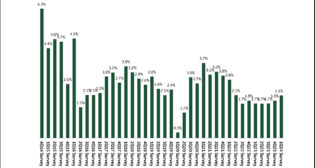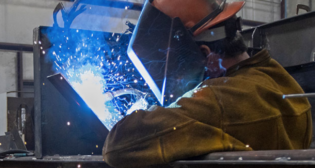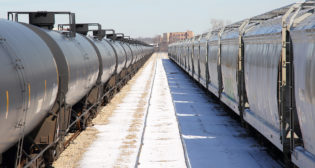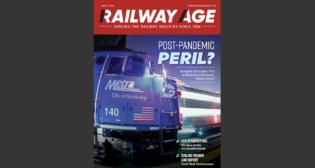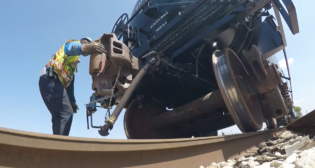
Cowen freight car panel: Market pros and cons
Written by William C. Vantuono, Editor-in-ChiefFreight car industry interests who participated in a discussion panel at Cowen and Company’s 10th Annual Global Transportation Conference in Boston offered their observations on a wide range of topics affecting the market. Among them: the recent uptick in railcar orders, lease rate recovery prospects, new capital flowing into the market, railcar demand recovery sustainability, and railroad traffic volume growth.
Matt Elkott, Vice President, Cowen Research, moderated the panel, which consisted of Todd Kahn, Vice President, Portfolio Management and Marketing, Chicago Freight Car Leasing; Robert Pickel, Senior Vice President, Marketing and Sales, National Steel Car; Richard E. Flynn, President and Founder, NorthEast Logistics Systems; David Humphrey, Ph.D., Senior Analyst, Railinc; and David Nahass, President, Railroad Financial Corp. and Railway Age Financial Editor.
Humphrey noted that about 21,000 new railcars were registered in Railinc’s Umler equipment registry in the first seven months of 2017. These include approximately 5,500 grain or fertilizer covered hoppers; 3,500 plastic pellet covered hoppers; 4,500 tank cars (60% non-pressurized, 40% pressurized); 2,000 box cars; 1,500 aggregate cars; and 1,000 vehicular flat cars. No new coal cars have been registered in Umler so far this year.
Inquiries for new railcars with OEMs remained elevated in the third quarter and for some car types increased from second-quarter levels. Pickel said industry orders in the range of 10,000-12,000 units per quarter going forward are possible; this would be more in line with replacement demand than the weak levels seen prior to the second quarter. Cowen is projecting orders for 9,400 units in the third quarter.
Kahn is concerned that investment capital may be coming in to the industry prematurely, which could lead to equipment overbuilding, in turn further pressuring utilization, worsening the prospects of a lease rate recovery.
Nahass noted that there has been some “bottom fishing” in the new railcar market. The low cost of capital and the promise of future higher equipment renewal rents is attracting investment, including by some major international financial institutions. Nahass believes this phenomenon is likely to continue for the foreseeable future.
Flynn is cautiously optimistic regarding railcar demand recovery sustainability, but expressed concern that rail volume growth has not been as robust as he had hoped.
Elkott asked the panelists to articulate realistic best-case and worst-case scenarios for railcar demand going forward. The panelists’ best-case scenario included a federal infrastructure bill, intermodal growth partly driven by trucking ELD (Electronic Logging Device) regulations, older equipment replacement, rebuilding of hurricane-impacted regions, freed-up capital at the railroads once PTC implementation is achieved, and overall economic growth. Worse-case, the panelists were concerned about political gridlock on Capitol Hill, rail loadings potentially declining, and, longer-term, autonomous trucks adding capacity in the trucking market.
“We believe that the increased order activity and likely solid production levels in the second half of 2017 bode well for the OEMs, but could place further pressure on industry fleet utilization,” Elkott said. “This could be detrimental to the prospects of a broad-based lease rate recovery in the near term. Additionally, industry experts at our conference did not rule out more involvement by financial institutions seeking yield. If such institutions opt for growing their railcar assets via new equipment orders, utilization headwinds could intensify. Discussions at our conference suggest that lease rates continue to trend largely flat. We continue to believe that a broad-based lease rate recovery is unlikely before late 2017 or into 2018.”
